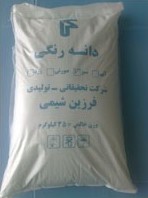Granular products as an additive in detergent powders

Colored grains containing sodium bentonite as an additive in detergent powders due to their natural and inherent properties have made it possible to design and manufacture detergent powder products with special efficiency and as a result, create a new product. This special product with the natural property of absorbing water, by swelling in water, has properties such as: emulsifier, suspending agent, ion exchange, mild detergent, and absorbent especially on insoluble soaps, as a co-builder, has found the ability to be used along with manufacturers such as sodium tripolyphosphate and zeolite. In addition, due to its low price, it can also be used as a filler. Processed sodium bentonite as an absorbent compound can absorb up to 30 times its weight in water, which due to its adhesiveness and soapiness when wet, in addition to creating a softening state in the warp and weft of cotton fibers, provides softness in the dried clothes after washing and creates a special state when ironing. As a result, sodium bentonite has been introduced as an additive to washing powder as a fabric softener. While using common cationic softeners, which are usually widely used to soften towel clothes after washing, as a result of repeated washing and draining with them, white cotton clothes have a yellow color on the surface of the fabric. Sodium bentonite, as one of the agents for softening fibers after washing, besides not having this problem, also creates the ability to design a product with the ability to wash and soften in one step. An additive containing sodium bentonite has the ability to add 3 to 5 percent as colored grains and 10 to 30 percent as colorless grains or granules in manual powders.
Advantages of using colored grains for manufacturers of detergent powders:
1. Designing and manufacturing new products containing color additives with the introduction of special functionality for the consumer with the aim of satisfying the customer and developing the market.
2. Reducing the total price by replacing expensive components such as STPP and zeolite.
3. Increasing the production capacity after the drying tower in the production units by expanding the capacity in the post-addition sections and thus reducing the cost of powder production with the spray dryer method.
4. The ability to produce finished products in local markets by mixing products containing bentonite into semi-finished powder to develop domestic and international markets.
And finally, reducing the total price, increasing the ability to compete with the variety of products, and creating new needs for powder products in the domestic and global markets. Colored seeds can be produced and delivered in different colors, especially cream, blue, green, yellow, and pink.
